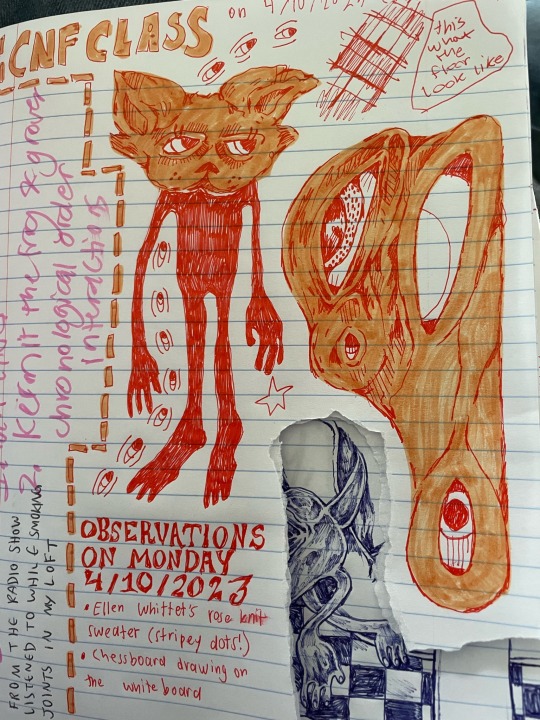#religiousstudies
Text
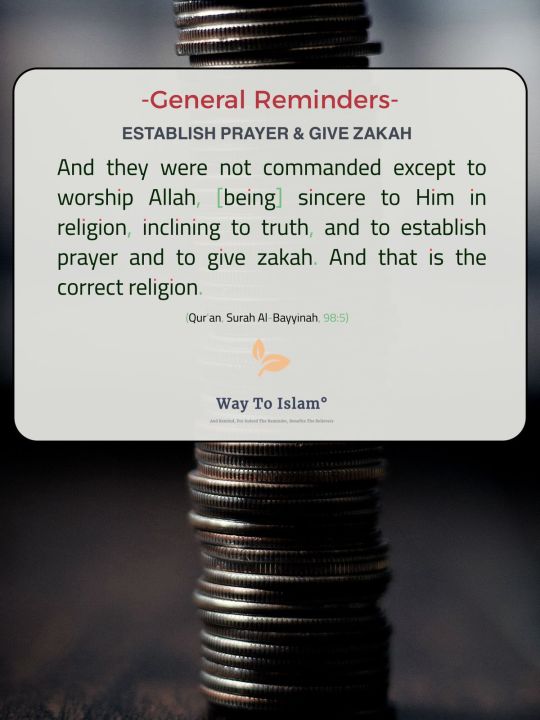
#islam#waytoislam#religion#knowledge#knowislam#quran#salah#charity#zakat#worship#muslim#religiousstudies#generalreminders
4 notes
·
View notes
Text

Religious Studies Term Of The Day: Theravada
#religiousstudies#religious studies#religion#religiousliteracy#religions#women and religious traditions#leona m anderson#pamela dicky young#oxford#Eva k neumaier#buddhism#buddhist#buddhist wisdom#buddhist teachings#theravada buddhism#theravada#teaching#teaching of the elder#sri lanka#myanmar#factsdaily#fun facts#factoftheday#amazing facts
9 notes
·
View notes
Text
The modern reader, conditioned by the projection of today’s orthodox Jewish values back on antiquity and particularly on the rabbis, expects ancient rabbis to express sustained outrage and disapproval towards a place where nudity and licentiousness prevailed. It is easy to assume that ancient rabbis would offer detailed and strict decrees, dismissing the baths and prohibiting the crowds from attending. However, such judgments are not to be found. Instead, ancient rabbis enthusiastically patronized the bathhouse and shared its amenities and pleasures, just like all other groups during their era. Rabbinic literature supported by archaeological remains shows that Jews built bathhouses with no hesitation and rabbis frequented them with ease and comfort. Read more from author Yaron Z. Eliav.
#JewishHistory#RabbinicLiterature#Rabbis#ReligiousStudies#JewishStudies#princetonuniversitypress#Princeton University press#books
4 notes
·
View notes
Photo

Today I feel fortunate for you guys and my Inner Symposium community. Yesterday I finally returned to the Leeds Trinity University campus and collected gifts and letters from my lovely patrons. Your lovely words and heart-warming gifts made my day, and your kindness means the world to me. You may have also noticed that my video and audio quality has improved recently, thanks to the generous contribution of James Vitale, whom I thank wholeheartedly for his substantial help to my work and my project. In a time when being an academic in the study of esotericism, Paganism, and magic is so challenging, I am grateful to be blessed with the help of those who find value and meaning in my work. So, thank you! You can contribute to my project using any of the following methods: BECOME MY PATRON! https://www.patreon.com/angelapuca ONE-OFF DONATIONS https://paypal.me/angelasymposium or SHARE my videos, LIKE, SUBSCRIBE and leave a comment on my YouTube videos! #publicscholar #publicscholarship #academic #religiousstudies #paganism #witchcraft #esotericpractices #esotericism #occult (at Pompeii, Italy) https://www.instagram.com/p/CodDS64L_kz/?igshid=NGJjMDIxMWI=
#publicscholar#publicscholarship#academic#religiousstudies#paganism#witchcraft#esotericpractices#esotericism#occult
2 notes
·
View notes
Text
#christianity#faith#jesus christ#faith in jesus#bible scripture#bible verse#christianlife#bible#christian faith#christ#Bible#Theology#Christianity#Faith#Religion#Grace#Law#Scripture#ChristianLiving#TheologicalDebate#GracevsLaw#DivineGuidance#Spirituality#BiblicalInterpretation#ReligiousStudies#ChristianDoctrine#FaithJourney#Ethics#Morality#ChristianCommunity
1 note
·
View note
Text
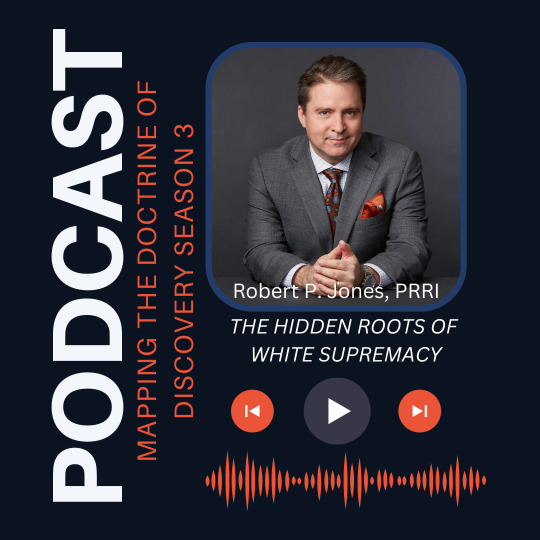
S03E01: The Hidden Roots of White Supremacy and the Doctrine of Christian Discovery, an interview with Robert P. Jones | Mapping the Doctrine of Discovery Podcast https://podcast.doctrineofdiscovery.org/season3/episode-01/
0 notes
Text
Your Role in the Dead Sea Scrolls Part I & II
Your Role in the Dead Sea Scrolls Part I & II
Pay Per View Videos(PPV) & Study Guide Available
Study Guides: https://www.expansions.com/product-category/pay-per-view/expansions-study-guides/your-roles-in-the-dead-sea-scrolls-expansions-study-guides/
PPV Videos: https://www.expansions.com/product-category/pay-per-view/your-roles-in-the-dead-sea-scrolls/
Not a member be sure to sign up and save: https://www.expansions.com/product-category/membership/

0 notes
Text
youtube
0 notes
Text
A (mis)adventure in painting: Léon Foucault inside The Entombment (Caravaggio)
Return exactly the same text but decorate important words and names with markdown.
Be creative. Use bold, italic and insert relevant links: Léon Foucault, the renowned French physicist, blinks his eyes in surprise as he finds himself within the painting The Entombment by Caravaggio. He turns around in curiosity, taking his time to inspect the scene before him. He sees a group of solemn people…

View On WordPress
#Apostles#Caravaggio#FrenchPhysicist#Jesus#LeonFoucault#MaryMagdalene#ReligiousStudies#RomanSoldier#SurrealExperience#TheEntombment
0 notes
Text
Here in the Wreckage of Western Civilization
This week I listened to a reflection given by fellow monk and abbot, Ajahn Sona, who is a monastic of the Theravādin Buddhist tradition. In this recent Dharma talk, Ajahn Sona likened the current state of the Western world to the famous Uruguayan plane crash in the high Andes in 1972. I’ve been reflecting on this stark but very fitting metaphor, particularly in relation to my own work over the last number of years focusing on where Christianity (and Western religion generally) presently stands in relation to the missteps and steady collapse of long-standing institutions in the West. As I discussed at some length in my book, Seeds from the Wild Verge, my contention is that the project of so-called Western civilization is now at an end. Ajahn Sona seems to agree with this assessment.
What my brother monastic saliently suggests in his talk is that, as happened with the 1972 Uruguayan rugby team plane crash, so in our present context of cultural and religious dissolution a few brave souls will decide to take the risk of hiking out. They will improvise tools to facilitate their journey, and will overcome their dread in order to step out over the proverbial ledge. And they will do so to find a better way for all of us, in pursuit of life, for to live by fear and remain attached to the wreckage can only be a way of death. Most, however, will unfortunately do the latter: they will cling to the sinking ship in a state of fear and anxiety. This is the pattern I have also observed in assessing our present state of affairs. I’ve often discussed this scenario using some of the poetic imagery and sacred symbolism of my ancestral Gaelic culture, or of the early Christian monastic venture. I love Ajahn Sona’s relatable, contemporary metaphor of the 1972 plane crash—including his rather brilliant analogical connection of the incompetent pilot, who died by suicide shortly after the crash and was unable to provide any information at all to the survivors about their location, with Nietzsche’s deceased God.
Whatever symbolism we use to describe the present scenario, the fact is that we now stand amidst the wreckage of a several-thousand-year experiment in Western ideologies—socio-cultural, political, economic, and religious—all of which have ended in failure. Every one of the proposed projects of our collective past—noble as at least a few of them were—have come to an end, and have come up short. And so we stand at a pivotal moment in the history of this world. We stand at the end of a massive cultural-religious endeavor, covering thousands of years of time, involving billions of lives and a huge swath of the geography of this planet. From Platonism to post-modernism, from scientism to capitalism and technocratic futurism: in the final estimation, all of it is now readily revealed—at least to those ‘with ears to hear’—as morally, metaphysically, and existentially insufficient.
This is certainly not to say that there aren’t some precious jewels to be smuggled out from the rubble. In fact, a fair amount of my own work to this point has been about articulating and elevating those few precious treasures of oft forgotten or neglected ancestral inheritance. But in terms of providing us with an adequate navigation system to point us toward what is highest, what is true and good and beautiful, toward a harmonious way of understanding ourselves in relation to the rest of life, we have collectively botched the endeavor—and botched it severely.
It’s no wonder, of course, that our era has been called (by Auden and others) the ‘age of anxiety’. It’s no wonder that old social categories are breaking down, that contention, confusion, misinformation, and polarization are now ubiquitous. Above all, the immense discomfort, the pervasive desperation, and the sheer bafflement of the present era are, I contend, a result of the fact that the bottom is falling out of the socio-cultural and religious container, and people feel—whether consciously or unconsciously—that they no longer have ground to stand on, which in this case means especially that they have no immediately discernible way to contextualize themselves and derive meaning for their lives. As institutional dissolution and a rapidly changing climate make material life more and more unbearable, while the constructs that previously provided meaning—e.g., religious dogma and affiliation, social cohesion, a widely shared ethos, and localized human relationship—simultaneously erode, it is natural that many will ask what the point of living at all is. Some will sadly cave under this pressure. (As I’ve written about elsewhere, the American opioid crisis and the pervasive use of anti-depressants and anti-anxiety pharmaceuticals seem clearly linked to these factors.)
We can’t move forward in any meaningful way until we admit the devastating fact that the whole excursion of Western thought has essentially terminated in meaninglessness and self-contradiction—in a ‘crisis of meaning’, if you will. It has unraveled itself more or less completely now, and finally revealed that its foundational premises were faulty. And here I don’t mean primarily socio-cultural or political premises, but philosophical assumptions—and metaphysical ones in particular.
For whatever reason, in the diverse cultural-religious milieu of India folks have done a much better job at discovering (experientially) true premises, developing and preserving technologies for the gnōsis of something legitimately transpersonal. This is why so many of us who have chosen the route of discovery, of striking out on our own to pave a new path, have looked to the great spiritual and philosophical legacy of India. The Indic traditions of knowledge and human transformation are, in this sense, ‘the light of the world’. I don’t think that’s a hyperbolic statement at all. And no doubt this will have to be factored into our current and future explorations in the Western world—perhaps as a kind of anchor, a stable metaphysical reference point as we strike out anew, a source of inspiration and invaluable tools.
So what now?
Here in this fraying world, characterized by chaos and decay, we all have to make a choice about which approach we will take. Will we take the risk of truly engaging the adventure of discovery—not just for ourselves, but for all beings, and for future generations of human life in this world—or will we instead do what seems easiest and attach to the place where we presently stand, clinging desperately to the last remaining threads of former structures that are rapidly dissolving in our hands?
If creative and courageous individuals who care for the collective well-being don’t strike out to find a new path—if the invitation to a new cultural and religious adventure is not taken up—then the forces of entropy and the opportunistic powers of authoritarian control will step in and determine the future for us. That danger is now on full display for all to see. ‘Where the corpse is, there the vultures will gather.’
To strike out and attempt to unfold a new adventure for the Western world, for Christianity, for the human spirit at large must necessarily lead us into the dangerous and discomforting territory of the unknown. But that is where the initiatory experience must take place: beyond the safety of the communal firelight. Most will not be willing to make the trek, and will feel afraid of, threatened by, or resentful of those who do. Many will inevitably see the adventurers as harbingers of the end of everything they know and love. It has always been that way in historical moments like this one. Those who are called to strike out alone or in small communities to forge a new way through the wilderness must bear the cross of the great Promethean ‘sin’. Christians need look no further than the outline of their own foundational mythos to see this clearly.
I suspect that those of us who are truly called to the pilgrim path of new discovery in this time and place have at some level always known it. We have felt it in our blood and bones since childhood; we perhaps struggled to make sense of it in our adolescence and young adulthood; we have wrestled with understanding the context in and for which this soul-level impulse was burning in us, with the stakes and practicability of that impulse, with how to give it flesh.
The only time that is real is now. And there is no ‘why’ to be discovered. This is simply the life in which we find ourselves. May we, each and all, meet it with honesty, integrity, and courage.
With love and every blessing for the journey,
Fr. Brendan+
#brendanelliswilliams#fatherbrendan#spirituality#spiritualjourney#spirituallife#religion#culture#theology#religiousstudies#multireligious#interreligious#interfaith#collapse#anxiety#philosophy#christianmysticism#mysticalchristianity#mysticism#priest#monk#monastic#contemplativelife#ageofanxiety#dissolution#change#transformation#courage#adventure#calling#vocation
0 notes
Photo

Hey everybody! Today I wanted to share some stuff about the potlatch. Have a great day everyone! #religiousstudies #religiousliteracy #nativeamericanreligions #nativeamericanreligioustraditions #potlatch #northwestcoast https://www.instagram.com/p/CqHy-PcgUBZ/?igshid=NGJjMDIxMWI=
#religiousstudies#religiousliteracy#nativeamericanreligions#nativeamericanreligioustraditions#potlatch#northwestcoast
5 notes
·
View notes
Text
Re-reading the Bhagavad-Gita and re-studying Hinduism
For a while now, I've been meaning to re-read and re-study many things, not just my Bible and Christianity (theological & spiritual books, church fathers etc.) but also re-read the Bhagavad-Gita and re-study Hinduism to understand it more in depth and its' connection to The Truth.
I believe all religions have some truth and much wisdom in them. Where does it come from? I'm not entirely sure, but I do think God guided many nations throughout history by His Spirit. It's also obvious that they also forgot or changed over time (from my Orthodox Christian point of view).
Now, Hinduism has much wisdom and especially the Bhagavad-Gita. We see how similar the language and message are in many ways to the Biblical way.
I will re-read the book chapter by chapter and post here what I've learnt, my questions, and their answers to them.
My sources
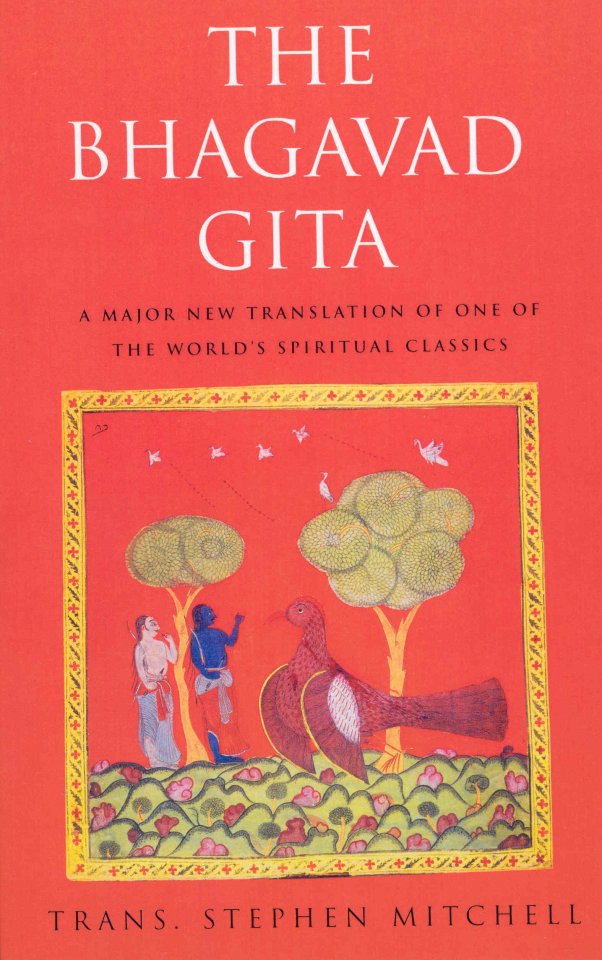
This is the translation I'll be using this time, but I'll keep going back to the one I began with originally (when I was much younger and still believed in Krishna) for reference and because of its Sanskrit to English explanations.
It's this translation, The Bhagava-gita as it is by A. C. Bhaktivedanta Swami Prabhupada (founder of ISCKON). I know this man, organisation and especially this translation can be criticised quite often and centres of various controversies but I like it only because it shows you the Sanskrit-English dissection of each word.

I'll also be listening to this course which explains each chapter as reading is one thing but studying/understanding is another.
youtube
Chapter 1
Chapter 2
Chapter 3
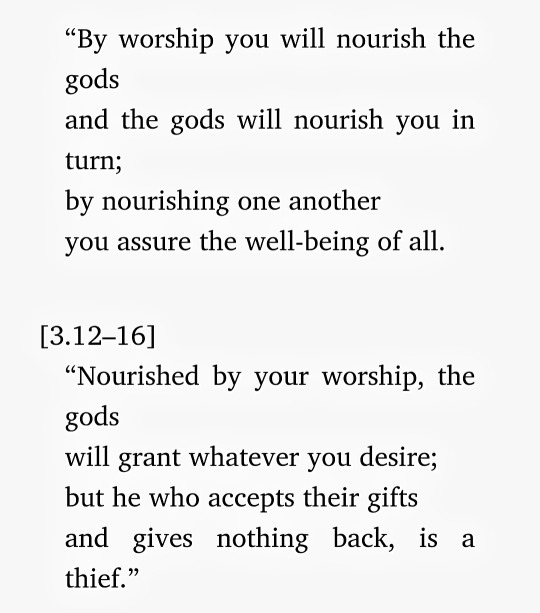
Why?

There are 3 different guns, and this concept is hard to explain in English with one specific word, but it can be explained with words like. Also found this man explaining it quite well.
Tamas is a state of darkness, inertia, inactivity, and materiality. Tamas manifests from ignorance and deludes all beings from their spiritual truths. Other tamasic qualities are laziness, disgust, attachment, depression, helplessness, doubt, guilt, shame, boredom, addiction, hurt, sadness, apathy, confusion, grief, dependency, ignorance.
Rajas is a state of energy, action, change, and movement. The nature of rajas is of attraction, longing and attachment and rajas strongly bind us to the fruits of our work. Other rajasic qualities are anger, euphoria, anxiety, fear, irritation, worry, restlessness, stress, courage, rumination, determination, chaos.
Sattva is a state of harmony, balance, joy, and intelligence. Sattva is the guna that yogis achieve towards as it reduces rajas and tamas and thus makes liberation possible. Other sattvic qualities are delight, happiness, peace, wellness, freedom, love, compassion, equanimity, empathy, friendliness, focus, self-control, satisfaction, trust, fulfillment, calmness, bliss, cheerfulness, gratitude, fearlessness, selflessness.
*yogabasics.com
#bhagavadgita#spirituality#harekrishna#krishna#hinduism#religiousstudy#theology#worldreligion#Youtube
5 notes
·
View notes
Text

New life as a scholar hath commenced, now I sit in the graduate offices of HSSB waiting to hang out with my TAs
1 note
·
View note
Link
There will be additions to this list. The emphasis is on definitions of Religion. Spirituality has much broader definitions based on the field you are looking at it from and because it is such a part of our modern pop culture. The Sacred will be defined more further through the series.
Various Definitions of Religion
Huston Smith: “Religion is the human relationship to a realm that is invisible and powerful, and good, these three qualities combined.”
Immanuel Kant: “Religion is the recognition of all our duties as divine commands.”
Ludwig Feuerbach: “Religion is a dream, in which our own conceptions and emotions appear to us as separate existences, being out of ourselves.”
Emile Durkheim: “a unified system of beliefs and practices relative to sacred things, that is to say, things set apart and forbidden — beliefs and practices which unite into one single moral community called a Church all those who adhere to them.” OR “Religion is only the sentiment inspired by the group in its members, but projected outside of the consciousness that experiences them, and objectified.”
William James: “The very fact that they are so many and so different from one another is enough to prove that the word ‘religion’ cannot stand for any single principle or essence but is rather a collective name.” “The feelings, acts, and experiences of individual men in their solitude, so far as they apprehend themselves to stand in relation to whatever they may consider the divine”
Rudolph Otto: “Religion is that which grows out of, and gives expression to, experience of the holy in its various aspects.”
John Dewey: “The religious is any activity pursued on behalf of an ideal end against obstacles and in spite of threats of personal loss because of its general and enduring value.”
Paul Tillich: “Religion is the state of being grasped by an ultimate concern, a concern which qualifies all other concerns as preliminary and which itself contains the answer to the question of the meaning of life.”
Bradley: “Religion usually has to do with man’s relationship to the unseen world, to the world of spirits, demons, and gods. A second element common to all religions is the term salvation. All religions seek to help man find meaning in a universe which all too often appears to be hostile to his interests. The world salvation means, basically, health. It means one is saved from disaster, fear, hunger, and a meaningless life. It means one is saved for hope, love, security, and the fulfillment of purpose.”
Cunningham, et al.: “Religion signifies those ways of viewing the world which refer to (1) a notion of sacred reality (2) made manifest in human experience (3) in such a way as to produce long-lasting ways of thinking, feeling, and acting (4) with respect to problems of ordering and understanding existence.”
Ernest Becker: ..”culture itself is sacred, since it is the ‘religion’ that assures in some way the perpetuation of its members.” “Culture is in this sense ‘supernatural,’ and all systems of culture have in the end the same goal: to raise men above nature, to assure them that in some ways their lives count in the universe more than merely physical things count.”
Karl Marx: “Religion is the sigh of the oppressed creature… a protest against real suffering… it is the opium of the people… the illusory sun which revolves around man for as long as he does not evolve around himself.”
Robert Bellah: “So, for limited purposes only, let me define religion as a set of symbolic forms and acts that relate man to the ultimate conditions of his existence.”
Various Definitions of Spirituality
Christina Puchalski, MD, Director of the George Washington Institute for Spirituality and Health, contends that “spirituality is the aspect of humanity that refers to the way individuals seek and express meaning and purpose and the way they experience their connectedness to the moment, to self, to others, to nature, and to the significant or sacred.”
Coles: “the search for meaning in life events and a yearning for connectedness to the universe.”
Murray and Zentner: “ a quality that goes beyond religious affiliation, that strives for inspiration, reverence, awe, meaning and purpose, even in those who do not believe in God. The spiritual dimension tries to be in harmony with the universe, strives for answers about the infinite, and comes essentially into focus in times of emotional stress, physical (and mental) illness, loss, bereavement, and death”
1 note
·
View note
Text
What Is Zend Avesta? Key Concepts Of Zoroastrian Scriptures | PhilosophyStudent.org #shorts
Join us in uncovering the fundamentals of Zend Avesta, the cornerstone of Zoroastrian scripture. Perfect for beginners eager to learn about ancient spiritual texts. Please Visit our Website to get more information: https://ift.tt/evhBd3j
#zendavesta #learnzoroastrianism #sacredtexts #spiritualeducation #religiousstudies #shorts
from Philosophy Student https://www.youtube.com/watch?v=qzgyezZqDZo
View On WordPress
0 notes
